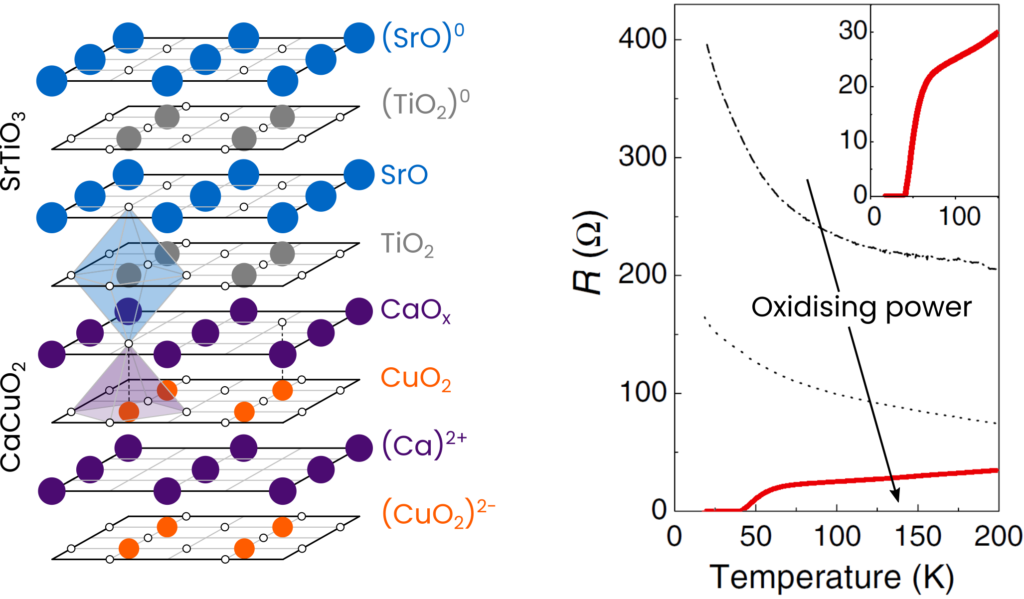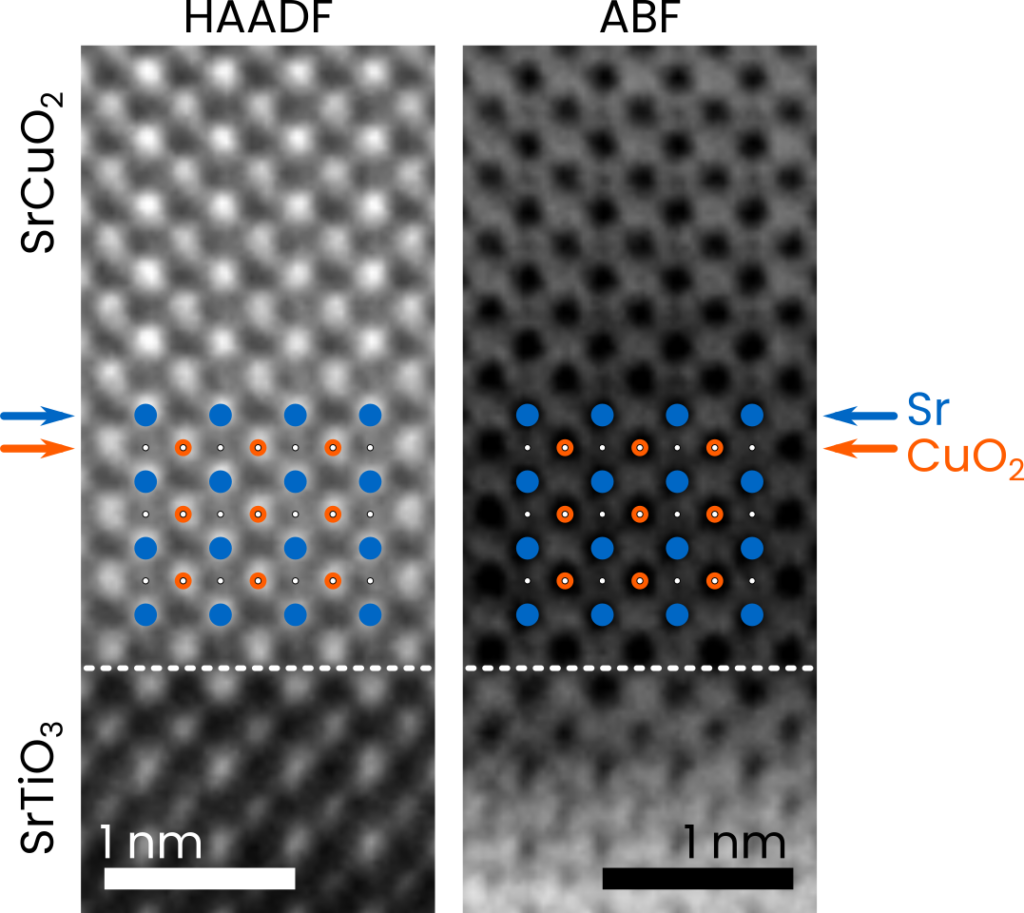Infinite layer cuprates
The discovery of high-Tc superconductivity has led to the intensive study of the infinite-layer parent compounds of the superconducting cuprates. These compounds, whilst insulating when grown in the purely infinite-layer phase (ACuO2, A= Ca, Sr, Ba), can be made superconducting via electron or hole doping, through chemical substitution or defect-layer formation.
The study of infinite-layer thin films and heterostructures has led to some interesting discoveries, including superconductivity in artificially layered cuprates [1], interface superconductivity between the infinite layer CaCuO2 and the perovskite SrTiO3 [2,3], and complete structural reconstructions led by the polar nature of the planes in SrCuO2 [4]. The rich physics which can be explored in an otherwise simple structure can therefore be utilised for material control through heterostructure engineering [5].

In Geneva, we synthesise infinite-layer cuprate thin films and heterostructures using pulsed laser deposition. We study their intrinsic properties, as well as their interfaces with different perovskite oxides. We use different stimuli to manipulate the oxygen sublattice and engineer novel phenomena in these structures.

[1]. D.P. Norton et al, Science, 265, 2074-2077 (1994)
[2]. D. Di Castro et al, Phys. Rev. B, 86, 134524 (2012)
[3]. D. Di Castro et al, Phys. Rev. Lett., 115, 147001 (2015)
Main researchers
Marios Hadjimichael, Adrien Waelchli, Clémentine Thibault, Bernat Mundet, Stefano Gariglio